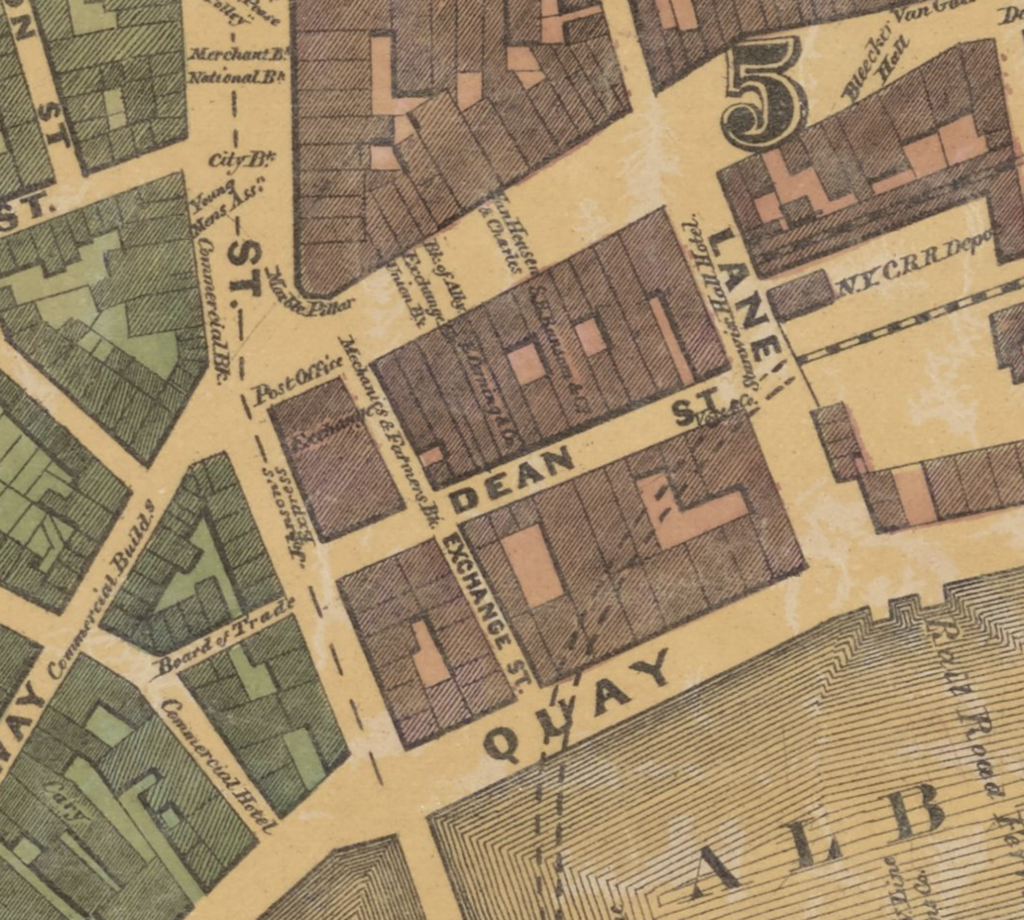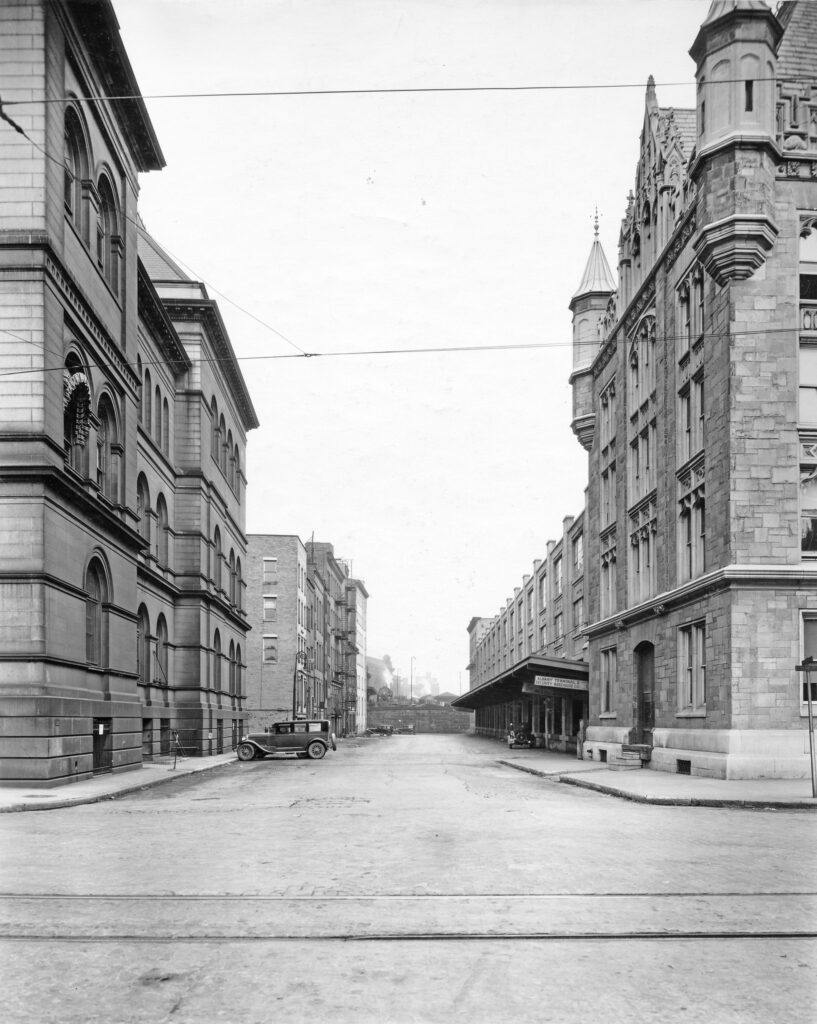The 34th in our series of Albany Bicentennial tablets is a bit of a mystery – and perhaps it was never installed at all. And if you’ve lived in Albany all your life and have still never heard of Dean Street, you’re probably not alone. It was never more than a stub – today you’d say it’s more an alley than anything else – and it’s most curious that the Bicentennial Committee chose to honor it with a plaque without any further explanation.
Tablet No. 34—Dean Street
Bronze tablet, 7×15 inches, in Government building corner State and Dean streets. Inscription: “Dean Street, formerly Dock Street.”
The Argus in 1914 wrote “There are no marks on the government building to show that this tablet was ever placed there. It is not at any other point on Dean street and may have been on the building on the northeast corner of Dean and State streets, which has since been removed.”


The “government building” is the old post office and federal office building, also sometimes called the Federal Building, which was built from 1879 to 1883, according to Diana Waite’s authoritative “Albany Architecture.” The building suffered a three-year delay in construction that saw a major change in design that resulted in it being done in the Renaissance Revival style that at least some of the Capitol also displays. The post office moved from this grand facility and into the beautiful new Post Office, Courthouse and Customs House next door around 1934 – and that building is beautifully decorated with an art deco frieze depicting the activities of all three of those agencies within.
Dean used to be called Dock Street – though it was a block away from Quay Street, the street running along the river (and, curiously, the newspaper reported that in Albany, the word was pronounced “kway,” unlike its pronunciation of “kee” or “kay” elsewhere in the world).

According to Stefan Bielinski at the New York State Museum, it was named for Captain Stewart Dean, who journeyed from Albany to China and back in the 1780s, and whose home was on what was then Dock Street. He was a privateer in the Revolution, and was a member of Albany’s Committee of Correspondence, as well as serving with the Albany militia. After the war, he built and sailed a new privateer, and in 1784 began the adventure of the sloop Experiment to China. He served on the city council and moved to Arbor Hill while keeping his house and a dock on the riverfront. Bielinski reports that Dock Street was renamed in his honor in 1826. He lived on another decade, but left Albany to live with his children, first in Lima, New York and then in New York City, where he died at 90 in August 1836.
Honoring Stewart Dean may have made sense for the Bicentennial Committee, but that’s not what they did. They simply chose to mark the street itself, one of the least streets in all the city.
Dean Street itself barely exists. It’s essentially an unrecognized alley running behind the old federal building and the courthouse between the Plaza and Maiden Lane.

Leave a Reply